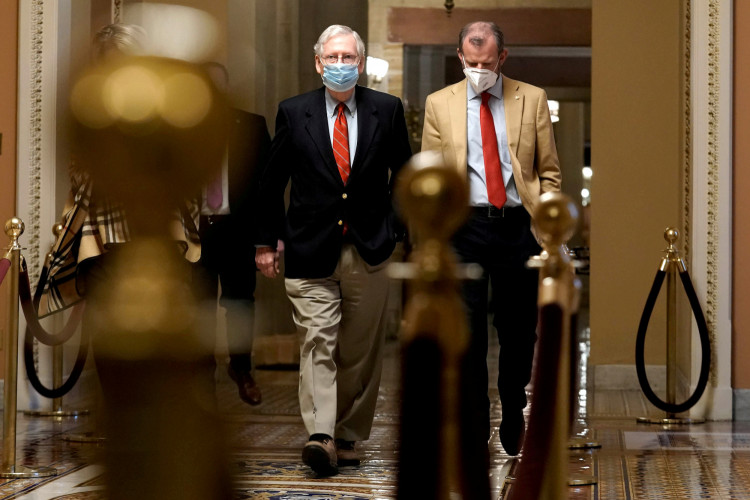Reuters - Asia share indexes fell Wednesday as market participants cashed in on recent price rises while the euro flirted with highs not seen in more than two-and-a-half years on hopes of a gradual world economic recovery supported demand for riskier currencies.
Australia share prices lost 0.79% while Japan's Nikkei share average lost 0.03% after jumping to a 30-year high Tuesday. Hong Kong's Hang Seng index futures were up 0.11%, however, while E-Mini futures for the S&P 500 were little changed.
Shares on Wall Street pulled back from record highs overnight as uncertainty about whether the U.S. Senate would authorize additional stimulus checks gave market participants a reason to sell paper that had made recent gains.
The U.S. Senate's vote on the additional checks appeared to be delayed early Wednesday Asia time while news that the U.S. has detected its first case of a highly infectious coronavirus variant could give market participants more reason to cash in gains.
But in a sign that markets aren't avoiding risky assets across the board the U.S. dollar struggled as market participants favored riskier currencies.
The euro was steady at $1.2255, after climbing overnight to a high of $1.2275 - a level last seen in April 2018. Traders said the common currency appeared well supported at $1.2200 and $1.2165.
"The start of COVID‑19 immunization campaigns in several countries as well as additional U.S. fiscal support reduce downside risk to the international economy and bode well for general financial market sentiment," analysts at Commonwealth Bank of Australia said.
The Australian dollar was steady at $0.7609, within sight of a two-and-a-half-year high of $0.7639 while sterling traded sideways at $1.3500. The yen was little changed at 103.55 with some traders predicting it will be pinned between the 103.00-104.00 range for now.
Investors are betting that the dollar is entering a downtrend in the foreseeable future as a recovery in the international economy next year leads them to shun so-called "safe-haven" assets such as the U.S. unit.
The dollar was listless against its basket of comparative currencies, losing 0.29% to 89.982 - within spitting distance from a two-and-a-half-year low of 89.72.
A sluggish dollar supported gold, with bullion prices steady at $1,877.11 an ounce.
Oil prices rebounded overnight as market participants hoped that an expanded U.S. pandemic aid stimulus would spur fuel demand and stoke economic growth. U.S. West Texas Intermediate crude futures were up 0.23% at $48.11 a barrel.
Treasuries were little changed after trading sideways overnight in thin trade amid the year-end holidays. U.S. two-year yields were steady at 0.1289% and benchmark 10-year yields were at 0.9347%.






